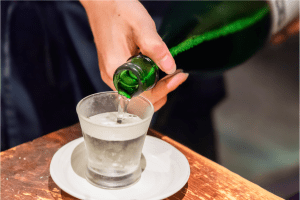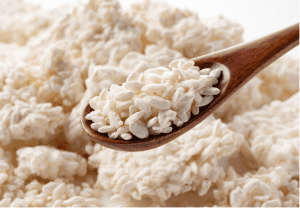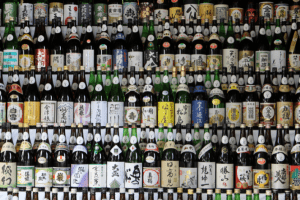Hello, Fellow Alchemists of Fermentation!
Sunday October 1st is National Sake Day! If you’re curious about the art of making sake at home, we hope this overview inspires you to try your hand at brewing this unique Japanese beverage.
Introduction and Objective
In our last several articles, we talked about yeast and bacteria. Today, we’ll introduce mold as a key player in fermentation and show you how to use a special kind of mold to brew sake at home.
Sake, often referred to as “rice wine,” is deeply rooted in Japanese tradition. The brewing process combines art and science, perfected over centuries. The objective of this article is to delve into the fascinating world of sake – its history, ingredients, and brewing process – and to inspire you to venture into homebrewing this unique drink.
What is Sake and Its Brewing History
Sake is a Japanese alcoholic drink made primarily from rice, water, yeast, and Koji mold. Unlike most other alcoholic beverages like beer and wine, which are brewed or fermented from grains and fruits, sake employs a dual fermentation process with both mold and yeast, making it unique. (Kombucha does something similar with bacteria and yeast, but that’s an article for another day). Sake’s history dates back over a thousand years, intertwining with Japanese culture, rituals, and celebrations.
Ingredients:
- Rice: Short-grain or medium-grain varieties are usually preferred. The rice quality impacts the final flavor profile.
- Water: Soft water is often used for a smoother taste.
- Yeast: Sake-specific yeast strains are available, but you could also experiment with other strains.
- Koji Mold: Aspergillus oryzae is available as a powder or already present on Koji rice. This mold is what converts the starch in the rice into sugars, making it fermentable for the yeast.
Making Sake at Home
- Preparation: For a 1-gallon batch, you’ll need approximately 5-6 lbs of rice. Wash the rice thoroughly to remove excess starch, then steam it until fully cooked but not mushy. Aim for the “al dente” texture.
- Koji Making: If you don’t use prepared Koji rice, use about 1 lb of the steamed rice for Koji making. Spread the rice on a tray and sprinkle Koji mold spores over it. Keep the rice at a warm, humid environment (around 86°F and 70% humidity) for 36-48 hours.
- Mashing: Combine the Koji rice with the remaining steamed rice, approximately 2 liters of water, and a sake yeast starter. In an anaerobic fermenter, combine all the ingredients. The yeast performs best in anaerobic conditions, meaning you should minimize exposure to oxygen to get the best fermentation.
- Fermentation: Temperature control is crucial. Traditional sake ferments at cooler temperatures (around 50°F) and can take 18-32 days. Warmer temperatures will speed up the process but may produce different flavor profiles.
- Clarifying: After fermentation, press the mixture to separate the liquid from the solids. Traditional sake brewers use a pressing bag or cloth to separate the liquid from the rice solids. For us homebrewers, a cheesecloth will work well. Simply pour the mixture into a cheesecloth-lined strainer and gently press to extract the liquid.
- Packaging: You can choose to filter the sake for further clarity or even pasteurize it for longevity. Once done, it’s time to bottle your brew. Ensure your bottles are sanitized to prevent any contamination and bottle like you do for beer, wine, and other homebrews.
 Make It Yours
Make It Yours
Aside from the basic elements, here are a few ways to customize your sake:
- Fruits: Infusing fruits like lychee, peach, or plum can add a unique twist.
- Herbs and Spices: Consider adding ginger, lemongrass, or a touch of cinnamon for a more complex flavor.
- Alternate Grains: Some brewers experiment with other grains like barley or millet, although this would technically make it a different kind of beverage (like barley with honey makes braggot).
Why You Should Try Brewing Sake at Home
Sake is more than just a beverage; it’s a testament to a rich and longstanding tradition. Even though it’s been around for centuries, the world of sake is mysterious to many of us. However, its brewing process, though seemingly complex, is well within the reach of homebrewers who are up for the challenge.
So why not take this journey into crafting your own version of this classic beverage? What unique twists would you add to make your sake stand out? Share your ideas and experiences with us in the response area below. I’m sure you’ll make something amazing.
Cheers!





 Make It Yours
Make It Yours